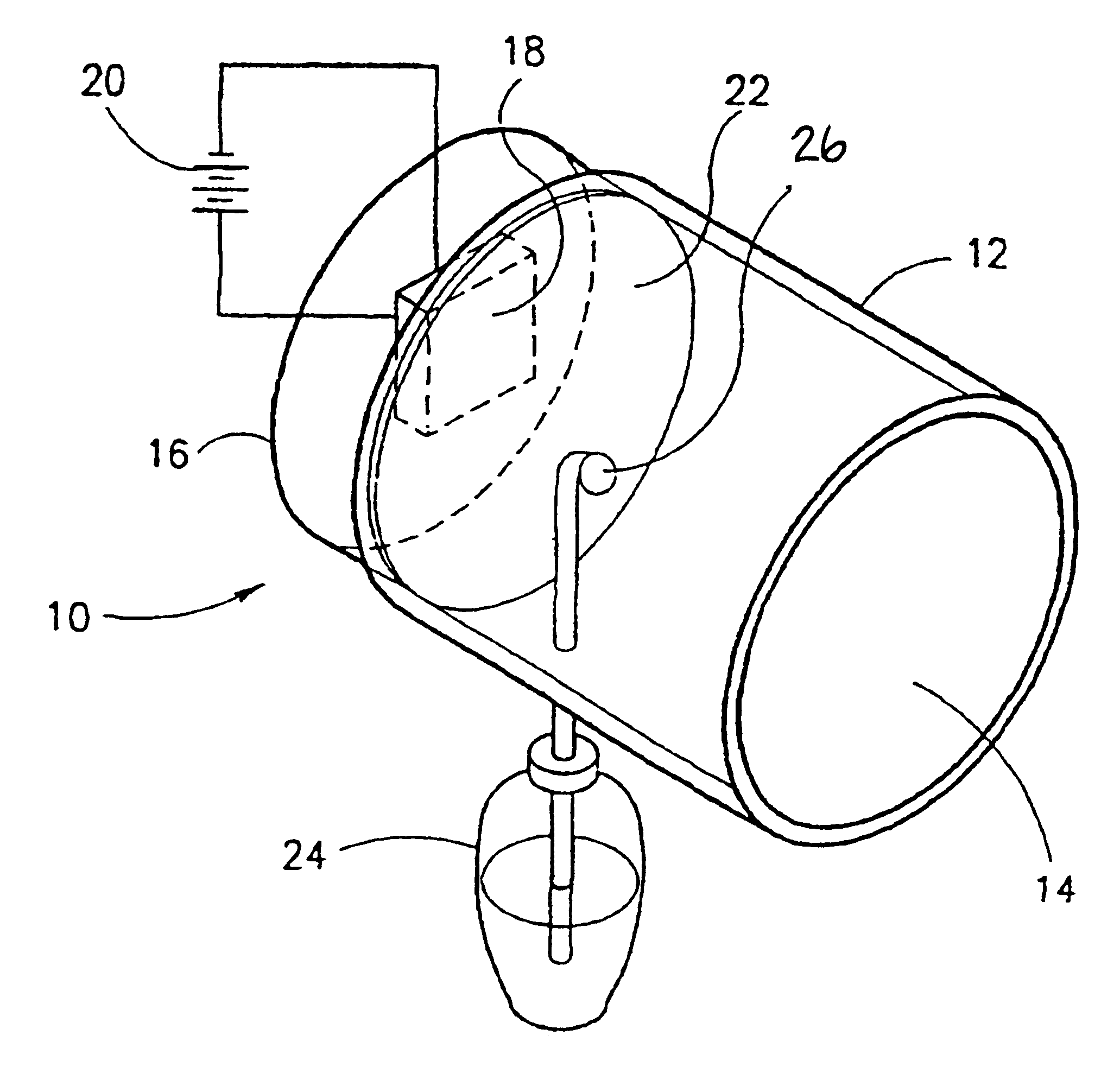Insect trap
a technology of insect traps and traps, applied in the field of insect traps, can solve the problems of not finding an efficient practical method of effectively eliminating insects
- Summary
- Abstract
- Description
- Claims
- Application Information
AI Technical Summary
Problems solved by technology
Method used
Image
Examples
example 1
Mosquito traps were prepared in accordance with an embodiment of the invention. Each trap included a chemical attractant comprised of a mixture of 25-30 g yeast, 135 g sucrose and 1000 cc water. The traps included also a heating unit which heated the sticker to a temperature of about 37.degree. C. In some of the traps the sticker was a black sticker while in the other group of traps the sticker was a bright color one.
In three individual tests, two traps one having a black sticker and the other having a light color sticker were placed in a room in the presence of one adult individual. The mosquitoes were released in the room and a number of mosquitoes caught in each trap were counted two hours after their release.
As seen in Table 1 below, a large number of mosquitoes were trapped in the trap having the black sticker while no mosquitoes or only very few were trapped in the trap having a light color sticker.
example 2
Traps were prepared as described in Example 1 above, and placed in cages. Mosquitoes were released in the cage and the number of mosquitoes caught in cages having traps with black stickers were compared to the number of mosquitoes caught in cages having traps with light color stickers two hours after release of the mosquitoes.
As seen in Table 2 below, and in agreement with the results of Experiment 1 above, most of the mosquitoes were caught in traps having a black sticker as compared to none or a single mosquito trapped in the trap having a light color sticker.
example 3
Traps were prepared as in Example 1 above. A trap having a black and a trap having a light colored sticker were placed either in a laboratory room in the presence of one adult individual or in a cage. Mosquitoes were released and a number of mosquitoes caught in each trap were counted 24 hours after their release.
As seen in FIGS. 2 (room) and 3 (cage) most of the mosquitoes both in the laboratory room as well as in the cage were caught in the trap having a black colored sticker while only a very low number of mosquitoes were caught in the trap having a light colored sticker. This was true whether the light colored sticker was, e.g., pink, yellow, white or pale-blue.
PUM
 Login to View More
Login to View More Abstract
Description
Claims
Application Information
 Login to View More
Login to View More - R&D
- Intellectual Property
- Life Sciences
- Materials
- Tech Scout
- Unparalleled Data Quality
- Higher Quality Content
- 60% Fewer Hallucinations
Browse by: Latest US Patents, China's latest patents, Technical Efficacy Thesaurus, Application Domain, Technology Topic, Popular Technical Reports.
© 2025 PatSnap. All rights reserved.Legal|Privacy policy|Modern Slavery Act Transparency Statement|Sitemap|About US| Contact US: help@patsnap.com



